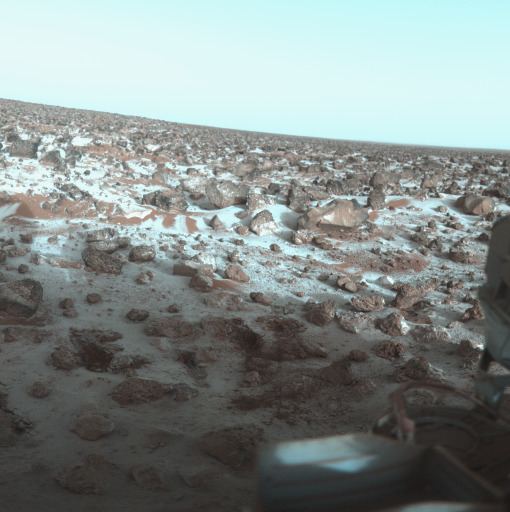 | ||
Location Northeast of Isidis Planitia, northwest of Aetheria | ||
Utopia Planitia (Greek and Latin: "Nowhere Land Plain"--loosely, the plain of paradise) is a large plain within Utopia, the largest recognized impact basin on Mars and in the Solar System with an estimated diameter of 3,300 km, and is the Martian region where the Viking 2 lander touched down and began exploring on September 3, 1976. It is located at the antipode of Argyre Planitia, centered at 46.7°N 117.5°E / 46.7; 117.5. It is in the Casius quadrangle, Amenthes quadrangle, and the Cebrenia quadrangle of Mars.
Contents
Many rocks at Utopia Planitia appear perched, as if wind removed much of the soil at their bases. A hard surface crust is formed by solutions of minerals moving up through soil and evaporating at the surface. Some areas of the surface exhibit what is called "scalloped topography", a surface that seems to have been carved out by an ice cream scoop. This surface is thought to have formed by the degradation of an ice-rich permafrost.
On November 22, 2016, NASA reported finding a large amount of underground ice in the Utopia Planitia region of Mars. The volume of water detected has been estimated to be equivalent to the volume of water in Lake Superior. (image)
Scalloped topography
Scalloped topography is common in the mid-latitudes of Mars, between 45° and 60° north and south. It is particularly prominent in the region of Utopia Planitia in the northern hemisphere and in the region of Peneus and Amphitrites Patera in the southern hemisphere. Such topography consists of shallow, rimless depressions with scalloped edges, commonly referred to as "scalloped depressions" or simply "scallops". Scalloped depressions can be isolated or clustered and sometimes seem to coalesce. A typical scalloped depression displays a gentle equator-facing slope and a steeper pole-facing scarp. This topographic asymmetry is probably due to differences in insolation. Scalloped depressions are believed to form from the removal of subsurface material, possibly interstitial ice, by sublimation. This process may still be happening at present.
Polygonal patterned ground
Polygonal, patterned ground is quite common in some regions of Mars. It is commonly believed to be caused by the sublimation of ice from the ground. Sublimation is the direct change of solid ice to a gas. This is similar to what happens to dry ice on the Earth. Places on Mars that display polygonal ground may indicate where future colonists can find water ice. Patterned ground forms in a mantle layer, called latitude dependent mantle, that fell from the sky when the climate was different.
In popular culture
In the Star Trek media franchise, Utopia Planitia—both on Mars's surface and in areosynchronous orbit above it—is the site of a major Federation shipyard. The USS Enterprise-D, USS Defiant, USS Voyager, USS Sao Paulo were built there.
The Flaming Lips song "Approaching Pavonis Mons by Balloon (Utopia Planitia)" was released in 2002 on the album Yoshimi Battles the Pink Robots.
